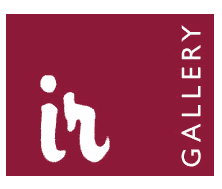

For Adults Only
Every country has its own idiosyncrasy when it comes to assess artistic values.
When I run into people who know that I am an art dealer I am asked to provide a list of names of the artists whose work I happen to have in stock. It would seem that the frequently mentioned artists are some sort of value warranty. It is sad that some art buyers don’t want to breach these boundaries where if only out of sheer curiosity. I started this webpage with a list of names. It led to reiterated hits on the better known artists. I then turned the page into a showcase of images and now many artists whose names are less known attract a greater level of interest.
Luckily enough, I have found a more “daring” clientele with criteria which ignores the artificially created context and feeds on the pure pleasure derived from the work. They own and display next to a Gerhard Richter a work by Saul Sanchez , a Pettibon side by side with a Sandra Bermudez and a diptych of Jorge Jurado close to a Roy Lichtenstein. Owning work of anyone in the list of the “high ranking” artists may give you status, like luxury labels .They achieve a “commodity” trade level. Mind you, even the Troy gold ounce may fluctuate in price. The “art adventure” is precisely about breaching these parameters.
With sensibly priced purchases it is difficult to go wrong. In the exploration of the creative process of any artist lies the essence of the artistic production. It is a fact that the secondary market (where works that do not come from the artist’s studio or their primary dealers or galleries but are resold and traded) is easier to forecast .It certainly generates a different type of emotion then the smell of fresh paint! Even there I believe that nobody can predict with certainty the development of the market. Too many factors converge. If you want a guaranteed investment I would strongly suggest a CD.
In December 2006, I had the chance to visit the Rubell Family exhibition space (the public showing of these private collections deserves a separate chapter)where an important selection of Paul McCarthy’s work was on display and a retrospective exhibition of Bruce Naumann at Mocca. Each of these proposals is daring and provocative. During the opening hours of both “institutions”, people were circulating freely through its spaces and alleys. The crowd did not allow an easy access and full view of the pieces so I went back a couple of days later .Warning signs hung at each entrance advising on the offensive contents of some of the work .At the museum, there was an additional wall and curtain with a guard, filtering the entry of children! Naumann(American.1941) is without a doubt by the complexity of his production, one of the most multifaceted experimental artists of several decades.
Both McCarthy and Naumann explore in their own way the reaction of the spectator to certain stimulus and how based on certain attitudes and conditioning, they can affect people. With the use of multiple techniques ,repetitive and obsessive movements, video ,installations and sound effects, they challenge us to travel through that very sensitive path where humor turns into pain .Physical aggression may be considered as expressed by McCarthy himself “virtual or fiction” since his scenes are staged and not real. One of his major works displayed at the Rubell Collection managed to destabilize the parents of a family that entered the room. Not being allowed to reproduce this piece, I will describe it. In the placid presence of his father , placing his hands on his child’s shoulders while the boy is copulating with a goat .With the aid of polymers and motors the scene is executed masterfully something we cannot deny. As well as other of his pieces, the idea is not to “break the taboo but to underline it”. The essence of his thought provoking scenarios is fascinating .Few artists can awake such ambiguous sensations. But does the spectator need to be swung between such extremes?
On the other hand, the position of Naumann, also an “enfant terrible” is more evocative. With the playful use of language one of his most important pieces, a neon sign in spiral shape reads: “The True Artist Helps the World” by Revealing Mystic Truths (Window or Wall Sign), 1967.s
I think it is quite important to underline what truths we want to reveal and what taboos we want to unveil for the good of the hereby cited humanity …
On display in my site 25 examples of how we can touch sensitive fibers without appealing to such extremes.
Iris Ramler
Iris Ramler Stein |